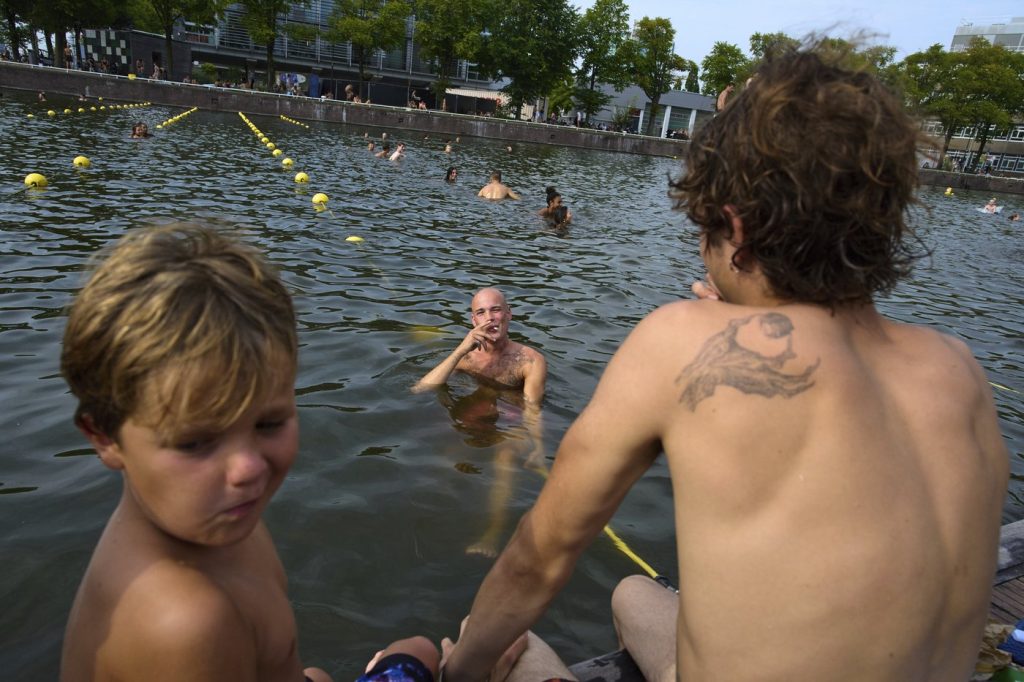In recent years, while Parisians have embraced swimming in the Seine, residents of Amsterdam have long enjoyed refreshing dips in the city’s Ij waterway. With a landscape characterized by canals, rivers, and below-sea-level pastures, the Netherlands has seen a surge in wild swimming. This trend is partly driven by climate change, which has increased temperatures and extended the summer season.
In 2023, Amsterdam had only one designated open-water swimming location. However, this summer, the number has increased to 13 official spots where locals can swim in canals, ponds, or rivers. Many residents also take advantage of numerous unofficial swimming areas scattered throughout the city.
One of the latest official swimming spots is the Marineterrein, a former naval base established in the 1600s, located a short walk from Amsterdam's central train station. On a hot afternoon, this area is bustling with locals who come to swim, sunbathe, and relax in the parks nearby. A full-size replica of an 18th-century Dutch East India Company cargo ship is moored close by, adding a historical backdrop to the setting.
Noortje Mol, a local swimmer, shared her experience, stating, “I saw a video on Instagram showing some different places you can go swimming, and this was nearby, so I thought, ‘perfect, let's go.’” Unlike many public swimming areas in other cities, Amsterdam’s official spots do not have showers or lifeguards, which reflects the city’s egalitarian spirit. Until the Marineterrein was designated as a legal swimming area earlier this year, locals would risk a fine of 170 euros ($200) for swimming there.
Regular water quality testing is conducted, with results made available on a national website. Despite concerns about cleanliness, swimmers like Argentinian Mike von Hütter have expressed confidence in the water's quality. “People think it’s dirty, but it’s not dirty at all,” he said while enjoying the sun on the jetty.
The swimming crowd varies throughout the day. In the mornings, a more mature and athletic group frequents the water. For instance, de Rooy, 68, who began swimming at the naval base during the COVID-19 pandemic, remarked, “Every morning is a light show.” Additionally, while bathing suits are technically required, many morning swimmers feel comfortable disregarding that rule.
Although there are more official swimming spots than ever, many locals continue to swim in any nearby body of water to cool off. On the other side of the city, a swimmer named Hans, who chose to keep his last name private, shared that he swims daily in an unofficial canal location, alongside passing boats, stating, “I swim every day; I've never had a problem.”
This growing trend of wild swimming aligns with broader cultural shifts in Amsterdam, where outdoor activity and natural water use are increasingly embraced. As access to and acceptance of swimming in public waterways continue to evolve, it marks a notable development in how Amsterdammers interact with their urban environment during the warmer months.










